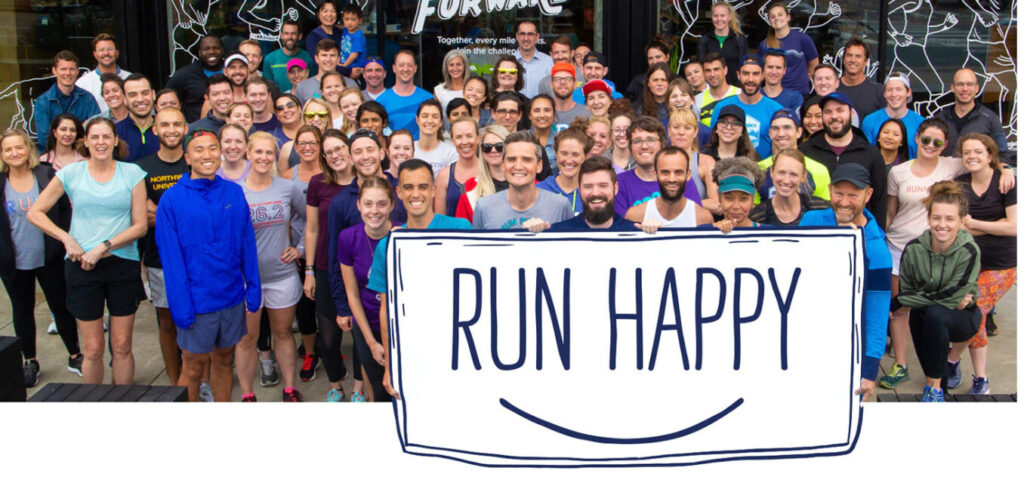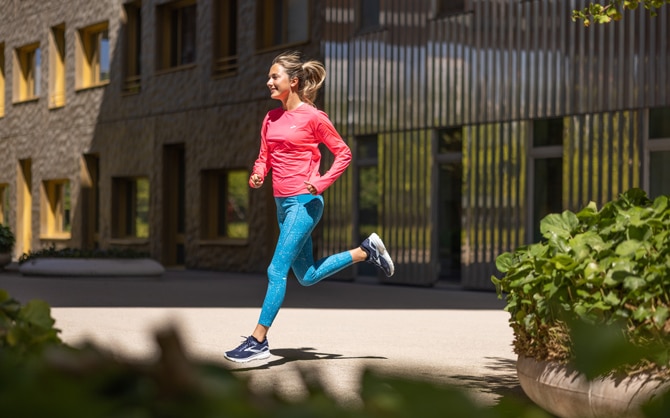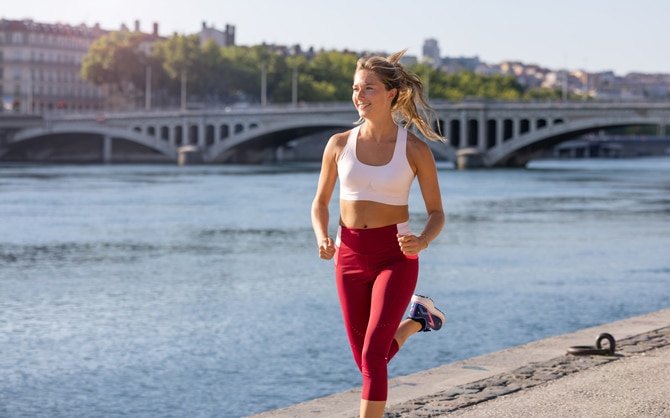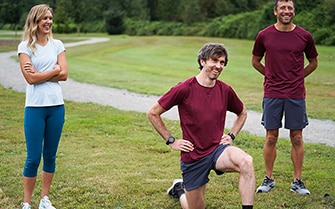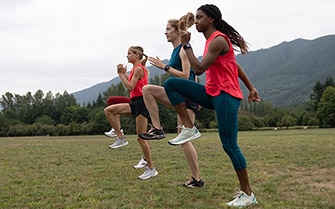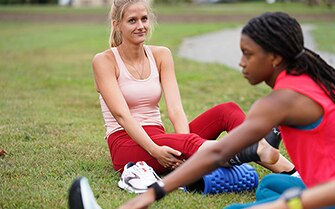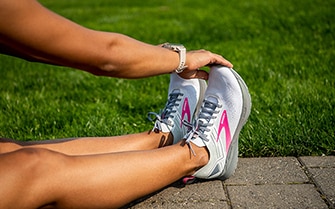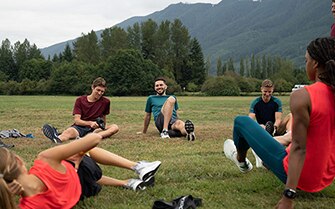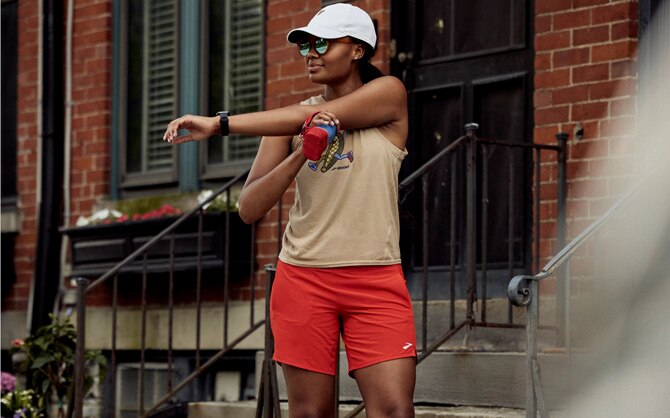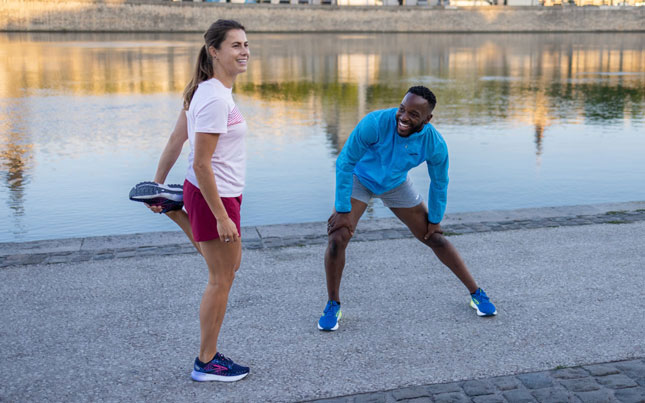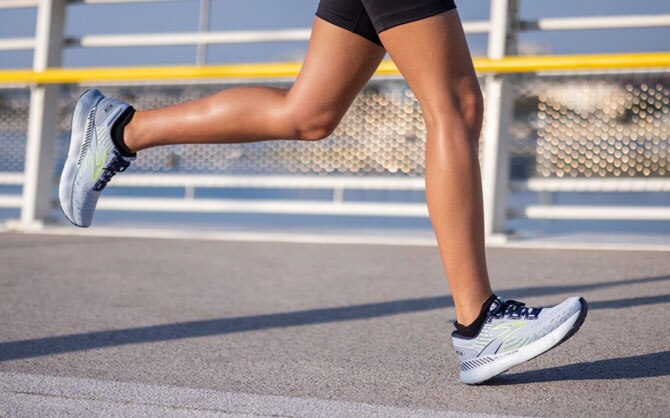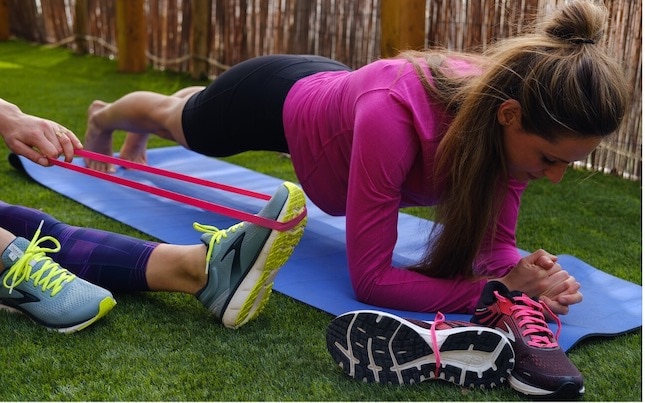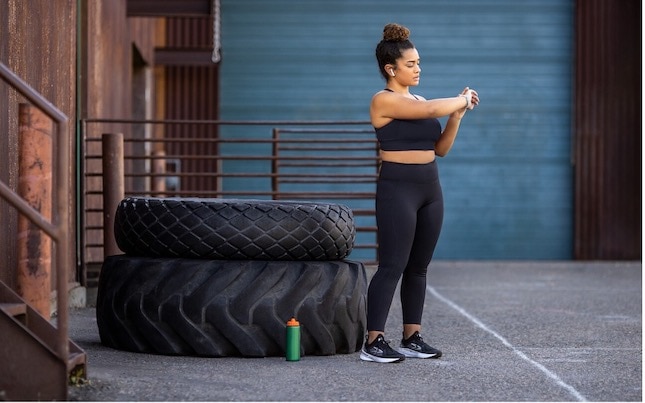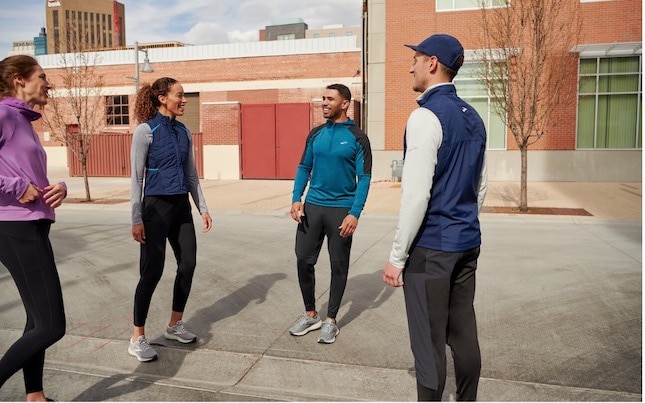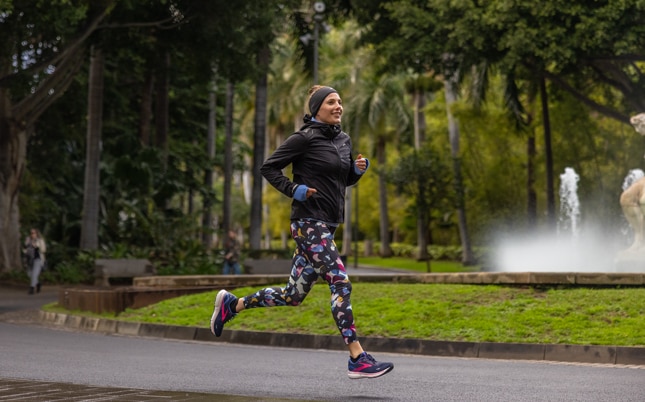Reading For Runners


Post-Run Stretches: 10 Stretches To Do After Running
Your Content Goes Here
It’s easy to get tunnel vision when you first start running. After all, to be a better runner you just have to run, right? In reality, running can be complex — it stresses muscles you may not expect in ways that aren’t always obvious. To build your fitness foundation, increase mobility, and help you avoid injury, try the following stretches after you run.
Why stretching after running matters
Before we get into specific after run stretches, it's good to understand why post-run stretches are so important. Stretching after running can encourage mobility and help to develop healthier form.
Increased mobility can improve running performance and prevent common running injuries. If you fail to stretch after a run (don't worry, we're often right there with you!), then you run the risk of your muscles becoming tighter and tighter – and those little niggles you're feeling now could end up turning into full-blown injuries.
Even if you don't have any areas you're worried about in terms of developing an injury, post-run stretching can still help to reduce muscle and joint stiffness, helping you to avoid the dreaded next-day DOMS!
After a run is the perfect time to stretch, as your muscles are already warmed up. Stretching warm muscles can help to improve their range of motion, which can directly transfer to improved running performance. Ever tried to run with tight hamstrings and felt like you can only shuffle along? Get a post-run stretch routine going and you may well find yourself gliding along more effortlessly on your next run!

What are the best stretches to do after running?
Now that we've covered why you should be stretching after your runs, let's get to the reason you're here: the stretches. For each of these stretches, move slowly and breathe deeply. Tacking these onto the end of your workouts can help to make sure your muscles recover well and are pliable for upcoming runs.
These are the after run stretches we will be discussing today:
- Toe touch stretch
- Hamstring stretch
- Prone hamstring stretch
- Standing quadriceps stretch
- Hip flexor stretch
- IT band stretch
- Outer hip stretch
- Inner thigh stretch
- Hip and lower back stretch
- Abs and arms stretch
Note that these are what's known as static stretches, which should only be performed after your workouts. To limber up before your runs, it's important to focus on dynamic stretches instead – but don't worry, we've got you covered with the essential stretches to do before running, too!

1. Toe touch stretch
This classic post-run yoga stretch gets deep into your hamstrings – super important to stay limber when you're a runner! It also gently stresses your lower back as your bend forward. Don't worry if you can't touch your toes with your legs straight, you can bend your knees and still achieve a good stretch.
- Stand upright with your arms at your sides and your feet about shoulder-width apart.
- Keeping your knees soft and your back as straight as possible, bend forward at the hips to slowly lower your head towards your knees.
- Relax your neck and shoulders while you reach your hands towards your toes. Stop when you feel the stretch along the back of both your legs, in your hamstrings.
- Hold for about 20 seconds before slowly returning to standing.
2. Hamstring stretch
Give your hamstrings some more love with this simple stretch, which you might also feel in your calves.
- Begin standing upright with your legs together, your toes pointing forward, and your hands on your hips.
- Keep your left leg straight and step it out in front of you.
- Point the toes of your left foot up, slightly bend your right knee, and lean forward at your hips while keeping your back straight.
- Bend toward your left leg until you feel the stretch along the back of the leg.
- Hold for 20 seconds, then slowly return to the starting position.
- Repeat with your right leg.
3. Prone hamstring stretch
Another stretch to avoid getting tight hamstrings – and bonus, you get to do it lying down!
- Lie on your back with your legs extended.
- Bend your right knee and keep your left legs straight on the floor.
- Place your hands behind your right thigh.
- Start to extend your right leg up towards the sky.
- Try to straighten your right leg – but if this is too much for your hamstrings, you can also keep your knee bent.
- Hold for 20–30 seconds.
- Repeat on the other side.
4. Standing quadriceps stretch
Your quads do a lot of work when you're running, so this type of post-run stretching will loosen things off nicely. It also gets into your hip flexors to improve your mobility.
- Begin standing upright with your legs together and your toes pointing forward. Slowly bend your left knee, and lift your left foot behind you. Place your right hand on a wall or bench if you need help maintaining your balance.
- With your left hand, gently pull your left foot closer to your glutes. You will feel this stretch the muscles along the front of your left thigh.
- Keep your knees together and hold for 20 seconds, then slowly return your left foot to the ground.
- Repeat with your right leg.
5. Hip flexor stretch
Depending on how tight you are, you might feel this in your hips, your calves – or both!
- Begin standing upright with your legs together and your toes pointing forward. Step your left foot forward.
- Slowly bend your left knee while keeping your back straight and both feet flat on the ground. You will feel this stretch on the front of your right hip. Hold for 20 seconds.
- Hold for 20 seconds, then slowly return to the starting position.
- Repeat with your right leg leading.
6. IT band stretch
Your IT band is the big band of tissue that runs from your hip to your knee. It's very common for your IT band to get tight if you run a lot, so make sure you loosen it up with this easy standing stretch.
- Stand upright with your feet together and your hands on your hips.
- Cross your left leg behind your right.
- While keeping both feet flat on the ground, slowly lean to your right side, and push your left hip outward until you feel the stretch along the outer left hip and thigh.
- Hold for 20 seconds, then slowly return to the starting position.
- Repeat with your right leg.
7. Outer hip stretch
Also known as figure four or reclined pigeon, this after run stretch targets your outer hip, and you may also feel it in your glutes and piriformis.
- Lie down on your back with your feet flat on the floor and your knees bent.
- Cross one ankle onto the opposite thigh.
- Using your hand, slowly push your knee away from you.
8. Inner thigh stretch
If you practise any yoga, you'll know this stretch as baddha konasana or butterfly pose. It's a great hip opener as well as being good for inner thighs which often get neglected. You may also feel it in your lower back as you bend forwards.
- Sit up tall.
- Bring the soles of your feet together, letting your knees fall out to either side.
- Use your elbows to gently apply pressure to your knees.
- You can lean forward slightly if this feels good, to intensify the stretch.
9. Hip and lower back stretch
This is another post-run yoga stretch you might recognise from your time on the mat. It's a good way of gently stretching your back, which does a lot more work than you might realise when you run.
- Sit tall on the ground, with both legs stretched out straight in front of you.
- Bend your right leg and cross it over your left leg.
- Keep your left leg straight.
- Place your left hand on the ground behind your sit bones.
- Either hug your right leg in towards you, or hook your right elbow over your right knee.
- Twist your abdomen to look over your left shoulder.
- Hold for 15–30 seconds.
- Repeat on the other side.
10. Abs and arms stretch
It's not just your legs that get a workout when you run. Your core and arms are working hard, too, so don't just focus on leg stretches after running – give the rest of your body some love!
- Stand with your feet about hip width apart.
- Stretch your arms overhead.
- Drop your shoulders away from your ears.
- Grab your left wrist with your right hand and lean towards your right side.
- Hold for 15–20 seconds.
- Repeat on the other side.
Better flexibility means better mobility
By incorporating a few simple stretches after running into your routine, you can build an even stronger running base than just running alone. Regular flexibility training will support mobility, develop healthier form, and help prevent injuries. Take 10–15 minutes after each session to perform a few post-run stretches – this time spent is one of the best investments you can make early in your running journey. These stretches will come in handy especially if you are looking to start training for a 10k.
If we have inspired you to add some of these 10 best post-run stretches to your routine, check out our range of running shoes so you can get started with the right kit.
Advice & Tips
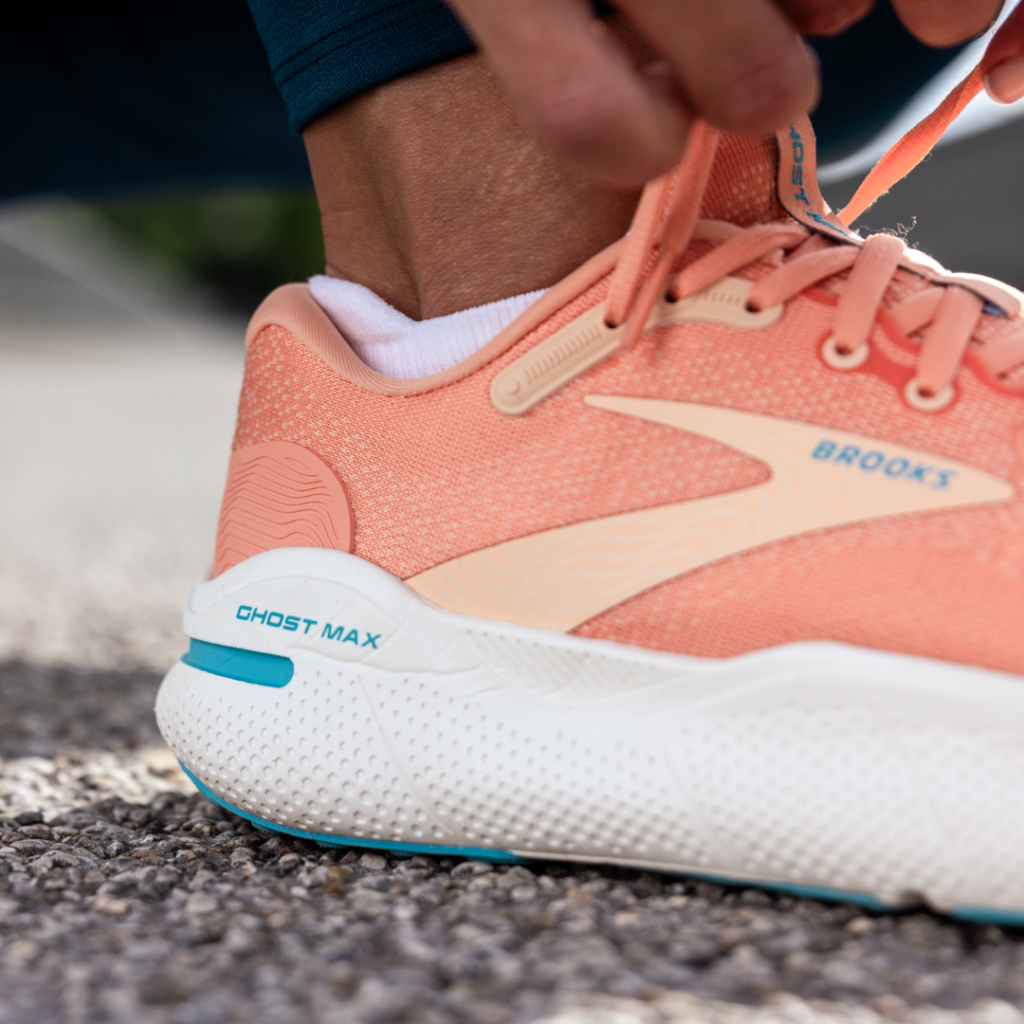


The GlideRoll rocker – it’s science
We engineered the shape of the Ghost Max to actively roll forward from the moment your heel lands to when you push off on your toes.
Launching in South Africa in January 2024.

